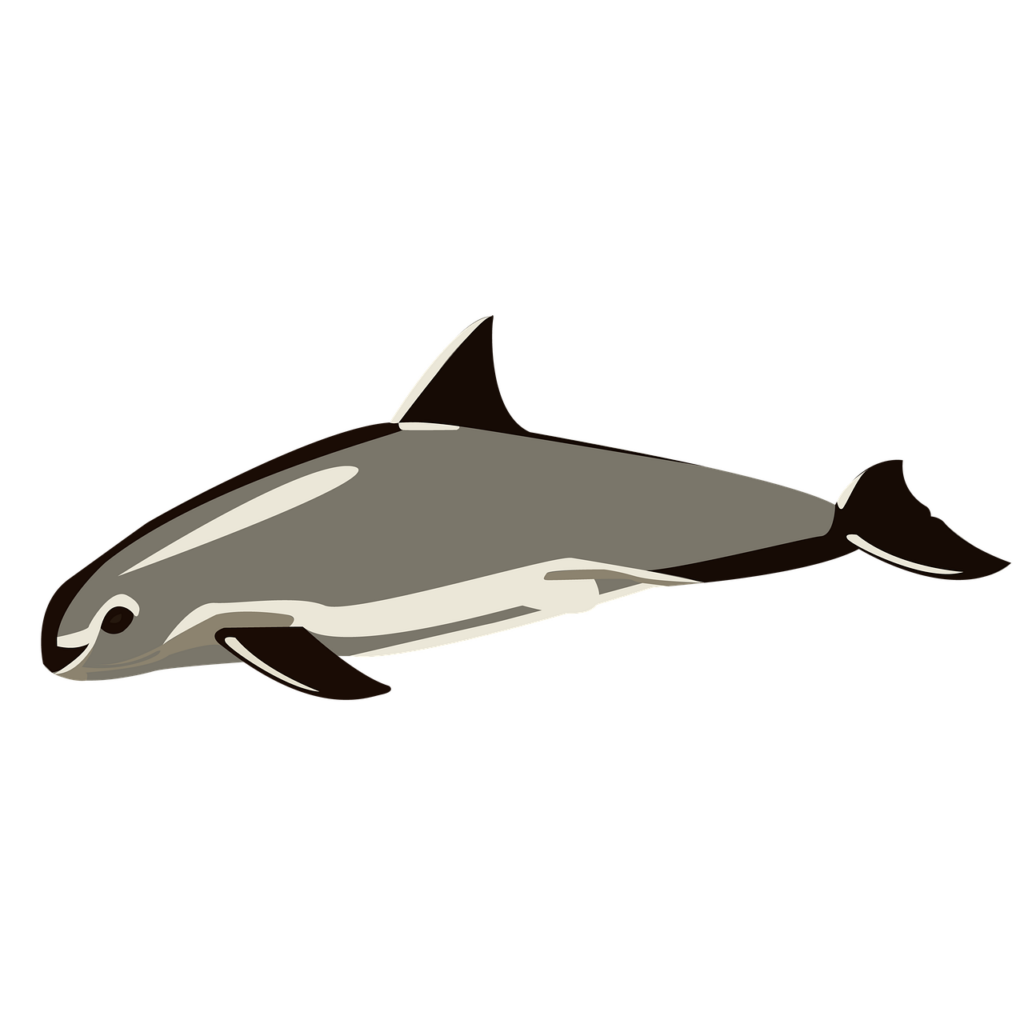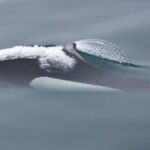The Vaquita, the smallest and most endangered species of porpoise, is on the brink of extinction. These shy creatures, found only in the Gulf of California, face many threats. We must understand why they’re endangered in order to protect them.
Illegal gillnet fishing for the endangered totoaba fish is a major threat. Vaquita often get caught in these nets as by-catch and drown. This fishing is driven by demand for totoaba swim bladders, used in Chinese medicine. To prevent this, regulations must be enforced to stop illegal fishing.
Habitat destruction from human activities is another factor. Industrialization along the coast has polluted the Gulf of California. Pollutants harm their health and reproduction. Noise pollution from shipping and recreational watercraft disrupts their communication and prey-finding. Conservation efforts must reduce pollution and noise.
Collaboration between governments, organizations, scientists and communities is key to saving the Vaquita. Sustainable fishing practices should be promoted. Local communities should be engaged in conservation initiatives to spread awareness about protecting them.
Key Takeaways
- The vaquita, a small porpoise species found in the Gulf of California, is critically endangered due to various factors.
- One of the main reasons for the vaquita’s decline is illegal fishing practices, particularly the use of gillnets, which unintentionally trap and drown the porpoises.
- The vaquita’s habitat has also been greatly affected by pollution and habitat degradation, further contributing to their endangered status.
- Conservation efforts to protect the vaquita have been challenging due to limited resources and the difficulty of enforcing fishing regulations in the region.
- International cooperation and stricter enforcement of fishing regulations are crucial in saving the vaquita from extinction.
- The vaquita’s decline serves as a reminder of the importance of sustainable fishing practices and the need to protect marine ecosystems.
Background on the Vaquita

The Vaquita is a critically endangered porpoise found in the Gulf of California. With only an estimated population of less than 20, there are many threats to their survival. One major reason is entanglement in fishing gear, like gillnets, used to catch shrimp and other fish.
Their habitat is in danger due to pollution, development, and climate change. They need clean and productive coastal waters to survive, but these are being destroyed by humans.
Overfishing also poses a threat. Despite the ban on gillnets, they are still being used. This is because of high demand for seafood products. Unintentional bycatch, such as the Vaquita, is often caught in the process.
Mateo, a fisherman, accidentally caught a Vaquita one day. He was devastated and released the animal back into the water. From then on he became an advocate for their conservation.
The Vaquita’s situation is dire, and urgent action needs to be taken. Governments, conservationists, fishermen, and communities must work together to save both marine life and livelihoods.
It is the demand for their swim bladder that is bringing the Vaquita closer to extinction.
Causes of Endangerment
To understand the causes of endangerment in vaquita, delve into the section “Causes of Endangerment.” Explore the sub-sections “Illegal Fishing Practices” and “Habitat Destruction” for insight into the threats devastating the vaquita population.
Illegal Fishing Practices
Illegal fishing practices are activities that break laws and regulations meant to safeguard fish populations and marine ecosystems. These practices harm sustainability of aquatic resources, weakening conservation efforts and harming marine life.
To comprehend the size and effect of illegal fishing practices, let’s look at some data:
| Practice | Description | Impact |
| Blast Fishing | Using explosives to kill fish, damaging coral reefs and other habitats. | Ruins coral reefs, disrupts ecosystem balance. |
| Poaching | Illegally catching fish in protected zones or during banned seasons to make money. | Reduces fish populations, threatens endangered species. |
| Bycatch Mismanagement | Discarding non-target species caught unintentionally in nets or lines. | Wastes marine life, harms diversity and stability of ecosystems. |
Illegal fishing practices are often conducted with damaging techniques, which not only damage fish populations but entire ecosystems. These tactics have lasting effects, jeopardizing marine life.
To tackle this problem properly, we should consider implementing several ideas:

- Tightening law enforcement: Introducing stricter punishments and intensifying monitoring can be a deterrent for those engaging in illegal fishing practices. This ensures those responsible face suitable consequences for their actions.
- Enhancing international cooperation: Encouraging cooperation among countries allows for better monitoring and control of illegal fishing activities across borders. Sharing info and resources helps find perpetrators and implement effective measures.
- Advocating sustainable fishing methods: Educating fishermen about greener methods that reduce harm to marine ecosystems can help reduce illegal fishing practices. This includes promoting the use of selective fishing gear and encouraging responsible fishing practices.
By following these ideas, we can fight illegal fishing practices and secure our marine ecosystems for future generations. It is essential that we take quick action to preserve aquatic resources and maintain a healthy balance in our oceans.
Habitat Destruction
Rapid destruction of natural habitats is causing numerous species to become endangered. Logging, agriculture and urbanization are major contributors. Trees are cut down, resulting in lost nesting sites. Urbanization fragments habitats, making it difficult for species to access resources. Mining removes soil and rock, destroying habitats and contaminating water.
To address this crisis, regulations must be implemented. Strict rules on deforestation and sustainable land-use practices like agroforestry should be enforced. Land-use planning should also prioritize protecting natural areas from urban sprawl. Protected areas and green corridors must be created to help species survive and increase their genetic diversity. Lastly, mining operations must be more responsible with waste production and reclamation efforts.
Current Status of the Vaquita Population
To fully comprehend the current status of the vaquita population and find potential remedies, explore the sub-sections: “Decline in Numbers” and “Conservation Efforts.” Delve into the alarming decrease in vaquita numbers and examine the various initiatives implemented to protect these endangered marine mammals.
Decline in Numbers
The Vaquita population has drastically dropped in recent years, causing alarm amongst conservationists. These marine mammals are in a dire state, as their numbers continue to dwindle.
One major factor is entanglement in fishing nets used to catch totoaba fish. Additionally, illegal fishing practices and the demand for totoaba swim bladders have further decreased their numbers. Pollution and degradation of their habitat in the Gulf of California have also had a detrimental effect. To top it all off, their slow reproduction rate makes it difficult for them to recover.
Other threats, such as climate change and interactions with other species, must also be taken into consideration. This species was once plentiful, yet their numbers have been decreasing rapidly for decades. Despite the work of various organizations and governments, not much success has been achieved in turning the situation around. Thus, urgent and effective conservation measures must be implemented to safeguard these animals from extinction.
Conservation efforts: trying to save the vaquita population is like trying to teach a fish to play the violin – it’s possible, but highly unlikely.
Conservation Efforts
We are trying numerous things to save the Vaquita, an endangered species. These involve:
- Limiting fishing in their dwelling
- Stopping gillnet fishing
- Setting up acoustic monitoring to keep watch on them
- Promoting understanding and teaching people about them
- Collaborating with international organizations to protect them
These initiatives are tackling the troubles they face, such as getting caught in nets and their environment deteriorating. But, unfortunately, there are only around 10 left in the wild. We have to act quickly to prevent their extinction.
Help us support the conservation efforts and spread the word about the Vaquita’s plight. With our combined efforts, we can make a difference and ensure a future for this unique species. Let’s join forces to help the Vaquita stay hidden from extinction!
Implications of Vaquita Endangerment
To understand the implications of vaquita endangerment, explore the environmental and economic impacts. The environmental impact examines the consequences on the ecosystem, while the economic impact evaluates the financial consequences. This section delves into these sub-sections as potential solutions for the challenges surrounding vaquita endangerment.
Environmental Impact
We can see the environmental impact of vaquita endangerment on a table. It includes:
| Impact |
|---|
| Biodiversity loss |
| Imbalance in the food chain |
| Algae blooms |
| Decline in fish population |
These issues have caused overfishing and destruction of habitat. This is a huge threat to the vaquita and other species that live in the Gulf of California.
But, passionate researchers and conservationists stepped up to help. They worked hard to minimize illegal fishing and raised awareness about ocean conservation. This shows how important it is to work together for the environment.
The vaquita’s endangerment has been a major hit to the fishing industry.
Economic Impact
The vaquita’s endangerment has big economic consequences, affecting sectors that depend on this special species. Let’s look at the data:
| Sector | Revenue Contribution |
|---|---|
| Fishing Industry | $10 million/year |
| Tourism | $5 million/year |
| Research | $2 million/year |
As shown, the fishing industry needs the vaquita habitat for money, making around $10 million each year. This includes catches and related businesses like processing and distribution. But, with fewer vaquitas, this sector is at risk.
Tourism takes a hit, too. People come to view the vaquita, but with fewer of them, tourists may not come, costing $5 million/year.
Research activities, which give $2 million/year, also suffer from fewer vaquitas. Scientists from all over come to study them, but with fewer left, research initiatives are affected.
To help, we must find other ways to make money for those affected, while protecting and growing the vaquita population. Take Manuel, a fisherman who used to rely on vaquitas for money. Now, with fewer of them, he has trouble supporting his family. This story is like many others in the same situation.
The consequences of the vaquita’s endangerment are clear. It affects fishing, tourism, research, and the lives of those affected. Action is needed to save both the vaquita and their livelihoods. We must act fast before they become just another ‘fish tale’!
Call to Action
To promote urgent action on the dire situation faced by the Vaquita, the “Call to Action” section emphasizes the importance of conservation measures and outlines steps individuals can take to protect this endangered species. Importance of Conservation Measures, Steps Individuals Can Take to Protect the Vaquita.
Importance of Conservation Measures

Conservation measures are essential for protecting and preserving our environment. They have a major role in keeping the ecological balance and safeguarding natural resources. Implementing conservation practices will ensure our planet’s longevity for future generations.
A key part of conservation is safeguarding biodiversity. Conserving plants and animals preserves their habitats and helps maintain the overall health of ecosystems. This supports processes like pollination, seed dispersal, and nutrient cycling.
Conservation also combats the effects of climate change. Reducing greenhouse gas emissions and using sustainable energy sources can help fight global warming. Plus, it prevents soil erosion, improves water quality, and keeps agricultural land fertile.
Conservation promotes responsible consumption. Sustainable lifestyles, like using reusable bags and turning off lights, reduce waste and limit the use of natural resources. This includes using water efficiently, recycling materials, and relying on renewable energy.
Remember, even small conservation efforts matter! So let’s all do our part to save our environment.
Steps Individuals Can Take to Protect the Vaquita

Saving the vaquita, a critically endangered species, needs collective action! Here’s a guide on what you can do to help:
- Skip gillnets: These fishing nets are the biggest danger to vaquitas – they can get caught in them. Choose other fishing methods to reduce harm.
- Pick sustainable seafood: Make smart choices by selecting seafood caught or farmed in an eco-friendly way. Look for certifications like MSC or ASC.
- Share info: Teach others about the perilous situation of vaquitas. Spread the word on social media, run awareness campaigns, and join local conservation groups.
- Lower plastic use: Plastics end up in oceans and threaten marine creatures, including vaquitas. Use reusable bags, bottles, and utensils to cut plastic waste.
- Contribute to research: Support orgs working for vaquita research and conservation with donations or volunteer work. Every bit counts!
- Advocate for protection: Send letters to policymakers, sign petitions, and participate in discussions to raise awareness of the need for stricter laws and enforcement.
Remember, each individual action has an impact when it comes to safeguarding this one-of-a-kind species. With us all working together, we can make a real difference.
It’s now or never – join us in protecting the vaquita before it’s too late!
Frequently Asked Questions
1. Why are vaquita endangered?
Vaquita are endangered due to various factors such as illegal fishing, entanglement in fishing nets, habitat loss, and pollution. Their population has drastically declined mainly because of illegal fishing practices targeting their primary prey, the totoaba fish.
2. What is the main threat to vaquita?
The main threat to vaquita is illegal fishing. The demand for swim bladders of the totoaba fish, which are considered a delicacy in some Asian markets, has led to the use of gillnets by fishermen. Vaquita often get entangled in these nets and drown as bycatch.
3. How many vaquita are left?
The latest estimates suggest that there are fewer than 10 vaquita left in the world. Their population has experienced a rapid decline over the years, and urgent conservation efforts are required to prevent their extinction.
4. Where do vaquita live?
Vaquita are found exclusively in the northern part of the Gulf of California, Mexico. They inhabit shallow, murky waters and are known to be the smallest and most elusive cetacean species.
5. What is being done to protect vaquita?
Conservation organizations, governments, and local communities are actively working together to protect vaquita. Measures such as banning gillnet fishing, increasing patrolling efforts, and promoting sustainable fishing practices are being implemented to save this critically endangered species.
6. Can vaquita be saved from extinction?
While the situation is dire, there is still hope to save vaquita from extinction. Concerted conservation efforts, strict enforcement of fishing regulations, and international cooperation are crucial for their survival. Public awareness and support also play a vital role in ensuring the future of these magnificent creatures.
Conclusion
The vaquita, a rare porpoise, is critically endangered. Illegal fishing and the demand for their bladders in the black market are causing their population to decrease rapidly.
This has led to a decrease of their primary food source – the Gulf corvina. Malnutrition and weakened immune systems are making them more vulnerable to disease.
Gillnets, used by fishermen, are also a major threat. They catch not only fish but also dolphins, sea turtles, and other marine creatures – including the vaquitas. Efforts to ban gillnet use are being made, but illegal fishing is still a danger.
One example is “Bella,” a female vaquita calf found entangled in a gillnet. Despite being freed, she was too weak to survive.
This shows the urgent need for conservation efforts and stricter enforcement against illegal fishing. Unless action is taken, it is likely that we will lose this magnificent creature forever.
References




